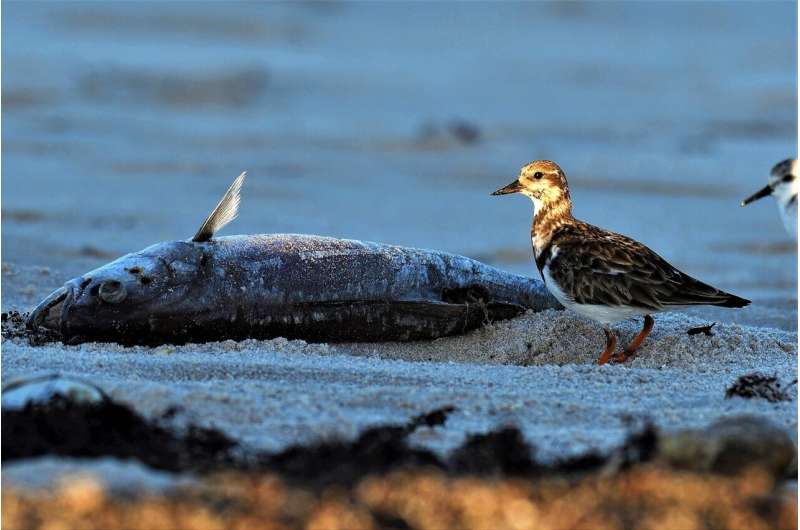This article has been reviewed according to Science X's editorial process and policies. Editors have highlighted the following attributes while ensuring the content's credibility:
fact-checked
reputable news agency
proofread
Red tide returns to San Francisco Bay, one year after large fish die-off

A toxic red tide has returned to San Francisco Bay, raising fears of a reprise of last summer's unusually large fish die-off.
Experts report that swimming algae was detected last weekend in rust-colored water samples from Emeryville, the Berkeley Marina, Albany and Marin County's Richardson Bay and Muir Beach.
While no fish deaths have yet been reported, authorities are advising against people or pets entering the water and are closely monitoring the bloom. Last summer's incident was alarmingly deadly, killing thousands of fish and other marine creatures, from tiny yellowfin goby to sharks and bat rays, according to reports submitted to San Francisco Baykeeper, an environmental group focused on water conditions in the bay. Foul-smelling corpses littered Bay Area beaches from San Pablo Bay to the South Bay.
"It seems as though we're catching the very early phases of this," said David Senn, a senior scientist at the San Francisco Estuary Institute. "We don't yet know, at this point, what the trajectory will be."
Teams are monitoring the bay with field work and satellite imagery. The algae, called Heterosigma akashiwo, kills marine life by depleting the oxygen in the water that they need to survive.
It's still unclear why this particular type of algae—which has long been a part of the bay's ecosystem—started blooming again.
A combination of nitrogen runoff and warm water is the likely culprit, according to Senn and Eileen White, the executive officer of the San Francisco Bay Regional Water Quality Control Board.
"In the short term, there's not a lot we can do," said White. "This type of red tide is not known to cause illness, but out of an abundance of caution, we always encourage people and pets to avoid contact."
Wastewater utilities remove some nitrogen and other nutrients during the secondary step of wastewater treatment. But last summer's die-off showed that more needs to be done, White said.
But she said that the San Francisco Bay Regional Water Quality Control Board is working with the region's 37 different wastewater utilities to plan, design and construct improvements to treatment facilities to reduce the discharge of nitrogen into the bay.
"Last summer was a game changer, when we saw the massive fish kills in the bay," she said. "So that triggered us wanting to act as quickly as possible."
"We know that nutrient reduction is something that's going to need to happen in order to mitigate these events occurring again," she said.
This year's outbreak is detected in different locations than last year, which started in Alameda's Oakland estuary and expanded into the deeper waters between Alameda and San Francisco, then grew through the entire system, including the Central Bay and South Bay, said Senn.
Experts worry that this summer's bloom will also spread and turn deadly.
Last year's bloom ended in early autumn, as days shortened and waters began to cool. Scientists had hoped that last winter's fierce rainstorms would dilute and cool the water, reducing risk.
But the organism deposited abundant seeds after last year's bloom and overwintered in the bay mud, setting the stage for this summer's bloom, said Senn.
2023 MediaNews Group, Inc.
Distributed by Tribune Content Agency, LLC.


















